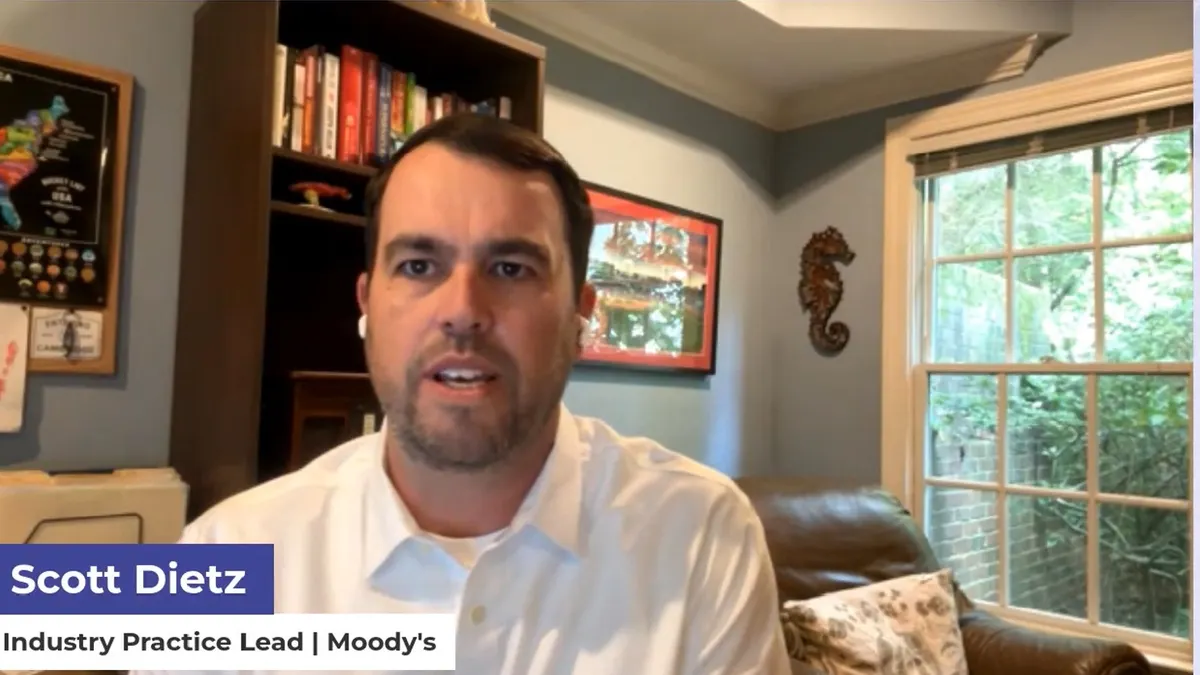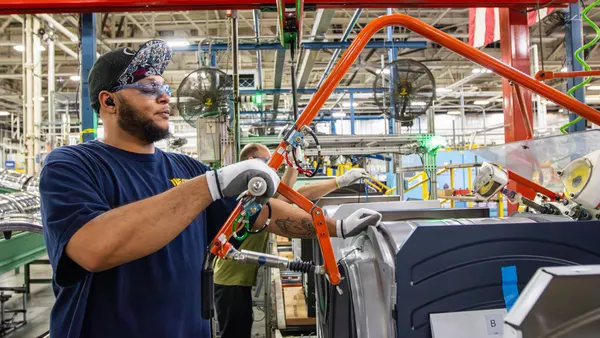Dive Brief:
- Consumer confidence slumped in November to the lowest level since the imposition of sweeping U.S. tariffs in April as inflation persisted well above the Federal Reserve’s 2% target and reports of a pullback in hiring added to signs of a cooling labor market.
- The Consumer Confidence Index fell by 6.8 points this month to 88.7, with gauges of the labor market, business conditions, income and the two other major index components declining, the Conference Board said Tuesday.
- Written survey responses were “led by references to prices and inflation, tariffs and trade, and politics,” Conference Board Chief Economist Dana Peterson said in a statement. “Consumers were notably more pessimistic about business conditions six months from now,” she said, adding that “expectations for increased household incomes shrunk dramatically.”
Dive Insight:
The report of sagging household confidence aligned with a University of Michigan survey that found inflation and pressure on personal incomes pushed down consumer sentiment this month to one of the lowest levels on record.
Consumers believe that their buying power is waning, according to University of Michigan researchers. Perceptions of current personal finances and buying conditions for durables both plunged more than 10% this month.
Consumer buying apparently began to falter toward the end of last quarter, according to data released Tuesday by the Commerce Department.
Retail sales rose 0.2% in September — less than forecast — on a pullback in spending on clothing, electronics and other goods targeted by import taxes. The 43-day federal government shutdown delayed release of the data by several weeks.
“Underlying retail sales were much weaker in September than over the preceding few months,” Pantheon Senior U.S. Economist Oliver Allen said Tuesday in a client note.
“This data are mostly old news at this point, but a raft of high-frequency and survey indicators suggests that spending growth has slowed significantly in Q4 so far,” he said. “The moribund labor market and ongoing drag on real incomes from tariff-induced price increases suggest that this slowdown is likely to be maintained.”
Signs that consumer moods are dimming may increase the likelihood that the Federal Reserve will cut the main interest rate by a quarter percentage point at its scheduled policy meeting on Dec. 9-10.
Several policymakers have voiced support for another reduction in borrowing costs in order to avert further weakening in the labor market.
Hiring will likely slow from a monthly average of 55,000 in the second quarter to 23,000 during Q4, the National Association for Business Economics said Monday, citing a survey.
In turn, the unemployment rate by the end of this year will likely rise to 4.5% from 4.4% in September, “primarily because of the rising jobless rate among recent college graduates due to the rapid proliferation of AI,” Ed Yardeni, president of Yardeni Research, said Tuesday in a report.
“The same may be said about 2026,” Yardeni said.












